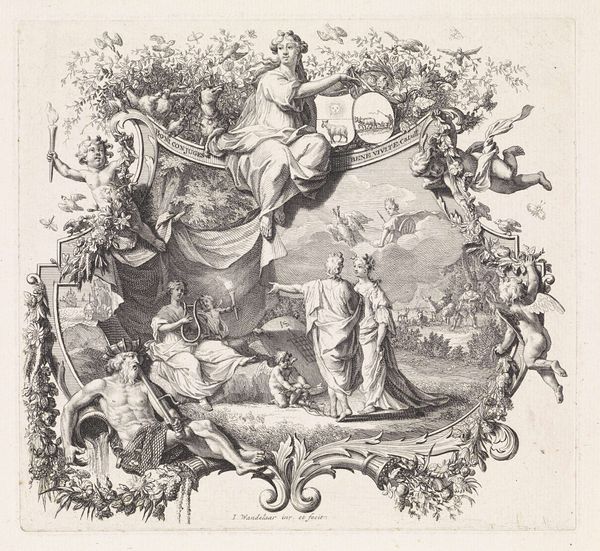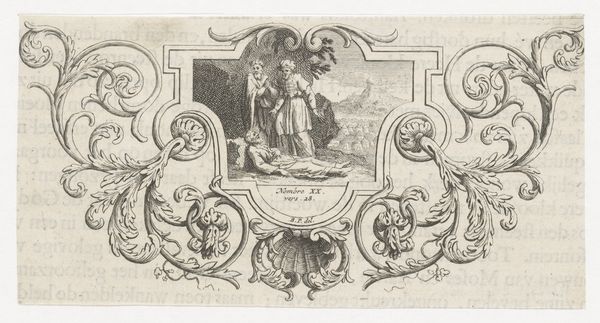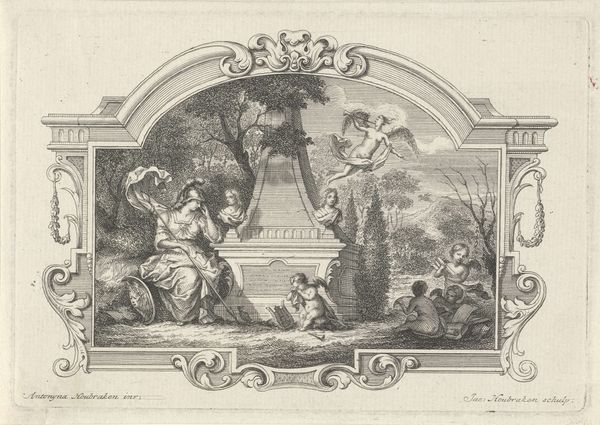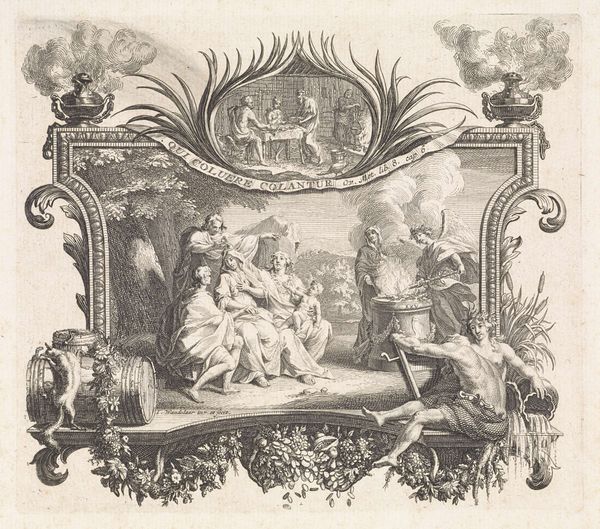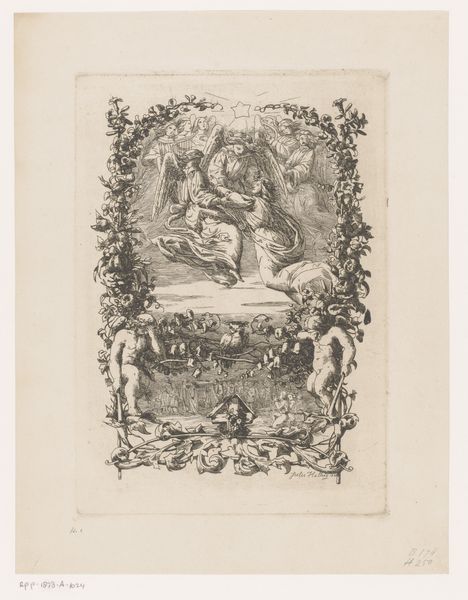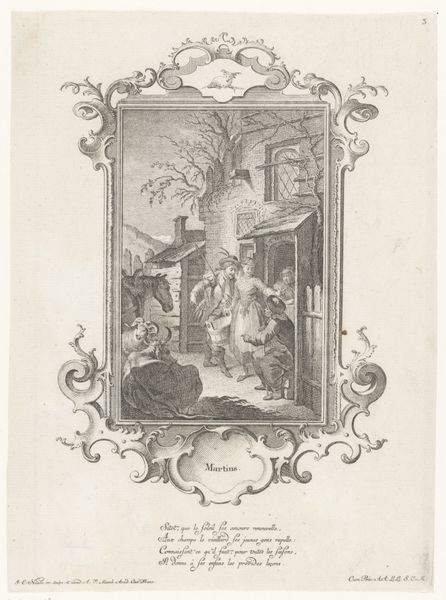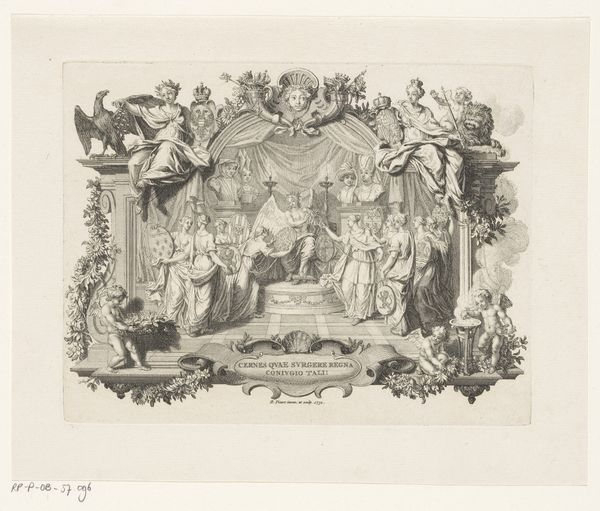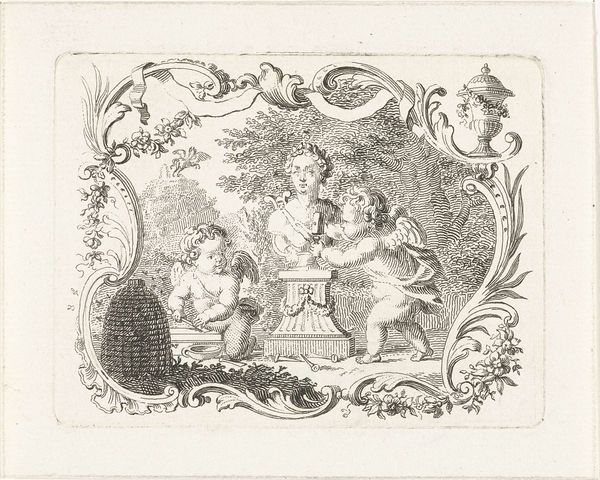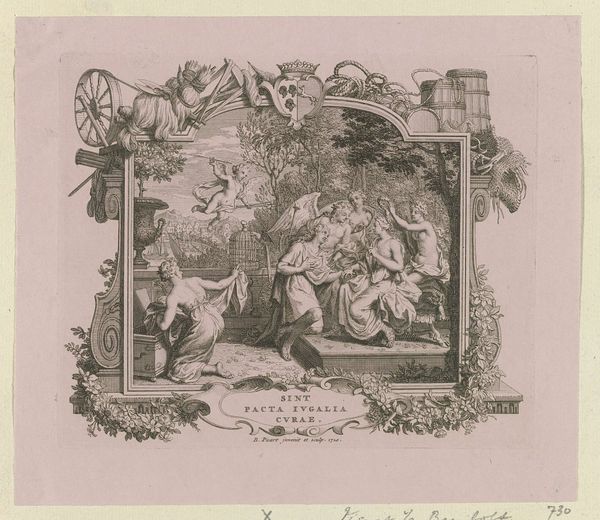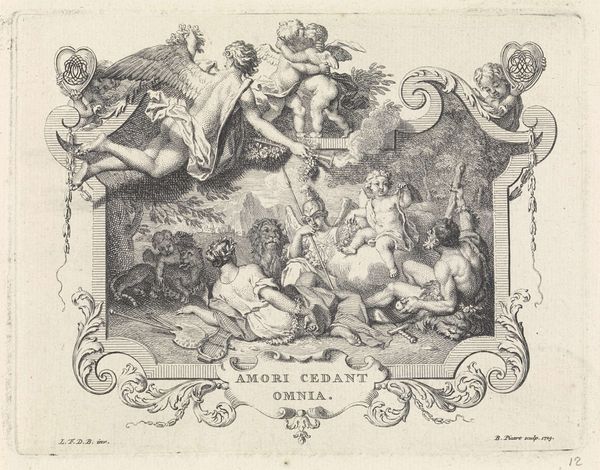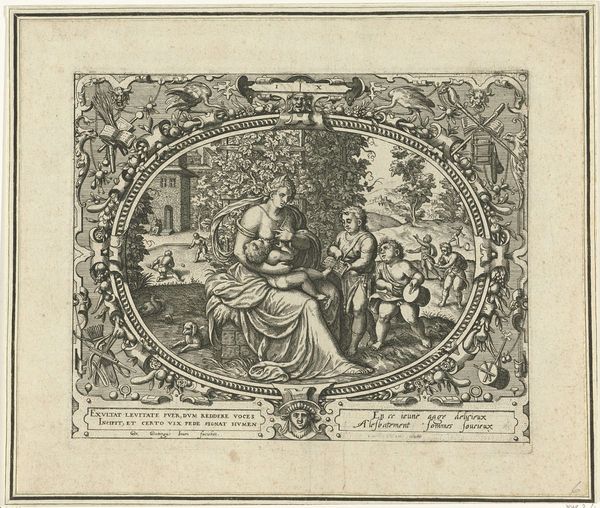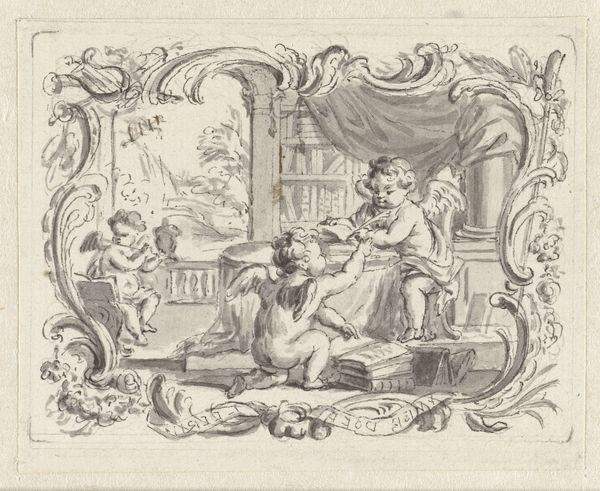
engraving
#
allegory
#
baroque
#
pen sketch
#
classical-realism
#
figuration
#
history-painting
#
engraving
Dimensions: height 68 mm, width 102 mm
Copyright: Rijks Museum: Open Domain
Curator: Here we have "Apollo, Minerva, and Mercury Assembled," an engraving made around 1725 by Bernard Picart, currently residing here at the Rijksmuseum. It’s an intriguing depiction of these classical deities in conversation. Editor: My immediate response is that it's remarkably intricate, especially given that it’s an engraving. The detail in the figures, particularly Minerva’s drapery and Apollo’s lyre, conveys a real sense of depth. The hatching really renders volume effectively. Curator: The baroque style lends itself to such rich detail, doesn’t it? Consider the social climate of the Enlightenment during this period. Picart's work served as a way of reconciling classical idealism with burgeoning humanist ideas. His rendering of these gods almost renders them as political allegories reflecting the aristocratic elite of the era. Editor: I notice that each deity is accompanied by their traditional attribute—Minerva's spear and helmet, Apollo's lyre, Mercury's caduceus. They reinforce each figure’s symbolic role. The choice of presenting them together, rather than in isolation, makes one ponder their linked associations and interconnected attributes, even, if we understand them through Jungian lenses, their individual psychological representations. Curator: Yes, and it’s important to remember the period when understanding the work. These allusions would’ve resonated with a specific kind of educated, privileged class who sought justifications and parallels between the ancient world and their own power. Consider the latent power structures echoed in such images, where access to education and wealth dictates the capacity for understanding its messages. Editor: I see how, within the classical realism, Picart cleverly utilized conventional iconography, the visual cues, to construct a specific understanding of power and wisdom. I can see this being a potent symbol of social hierarchies, solidifying existing perceptions of governance during the Enlightenment. Curator: Ultimately, this engraving, while appearing simply representational on the surface, works to reflect and reinforce very intricate social dynamics. Editor: Agreed; a look at its iconographic roots opens a fascinating insight into 18th century perceptions, allowing a powerful historical mirror effect.
Comments
No comments
Be the first to comment and join the conversation on the ultimate creative platform.
